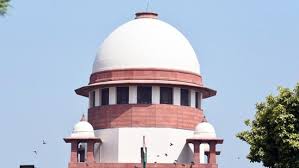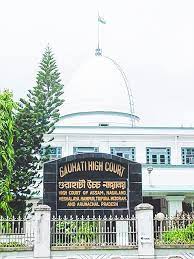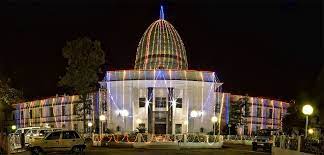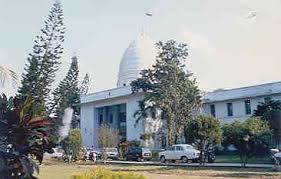The most important circumstance, among all, must be the circumstance of the appellant and Rani Kaur having been present in the appellant’s house on the intervening night of 18.05.99 and 19.05.99 and they having been seen leaving the house in the early hours of the day. For, the proof of presence has the effect of triggering into operation, Section 106 of the Evidence Act and the principle laid down in the case of Trimukh Maroti Kirkan v. State of Maharashtra. Even the circumstance that the appellant had the ‘opportunity’ to administer poison was strongly linked to aspect of proving the presence of the appellant and Rani Kaur in the appellants house. (Para 12)
Both the Courts below have in fact applied the principle referred to in Trimukh’s case. Their presence having been held to be proved, the Court relied on Section 106 of the Evidence Act and shifted the onus of proof on the accused to explain the circumstances which led to the unnatural death of the deceased. (Para 15)
In this case, the presence was sought to be proved by the prosecution on the basis of the testimony of PW-3, PW-4, PW-5 and the statements of the accused at the 313 stage. The Courts below had also relied on the testimony of PW 3 and PW 4 to conclude that the appellant was present in the house. Therefore, it becomes necessary to carefully evaluate this circumstance, given the consequences that flow from proof of this circumstance. (Para 17)
In the face of the above evidence on record, can it be said that the presence of the appellant and Rani Kaur in the appellant’s house in the intervening night of 18.05.99 and 19.05.99, has been firmly and cogently established? According to us, the answer must be in the negative. There are several omissions that have been brought out in the cross examination of PW-3 and PW-4, which seriously dent the credibility of their testimony. (Para 25)
However, the testimony of PW-3 suffers not merely from technical imperfections, there are glaring omissions and improvements that have been brought out in the cross-examination, which cannot be attributed to the illiteracy of the individual deposition. If there were minor contradictions and inconsistencies, that could have been ignored since the recollection of exact details as to location and time can be attributed to the lack of literacy. However, such is not the case here. PW-3 had only heard from her husband that the appellant and Rani Kaur were seen together in the appellant’s house on 18.05.99. To that extent, it is merely hearsay. Moreover, PW-4 has omitted to state this fact to PW3 in his statement before the police. He has also omitted to state that he advised his wife (PW-3) against going to the appellant’s house in the night since there may arise a quarrel between all of them. If these facts are ignored from consideration, we only wonder as to why PW-3 would visit the house of the appellant in the wee hours of the morning on 19.05.99. It seems quite unnatural for PW-3 to visit the house of the appellant at 430 am in the morning without any reason. If PW-3 was aware that the appellant and Rani Kaur were in an illicit relationship for a sufficiently long duration, there was no reason to suspect all of a sudden that the two of them would get together, administer poison and murder the deceased on 19.05.1999, which fact, prompted her to visit the house of the appellant at such odd hours in the morning. Both the Courts have failed to take notice of the several significant omissions and improvements in the evidence of PW 3 and PW 4. (Para 28)
Further, PW-5 is a chance witness. He was in his village, answering the call of nature at 6 am, at which point he claimed to have seen the accused persons going in a jeep. It was elicited in his cross examination that he had a side-on view since he stated the jeep came from behind and he got a sideon glimpse. The side-on view would have been only for a couple of seconds at best, since they were travelling in a jeep. Therefore, it is not safe to rely on this testimony solely to prove that the appellant was escaping along with Rani Kaur after having murdered his wife. (Para 29)
The case of the prosecution has, from the very start, been that the appellant was seen jointly along with Rani Kaur in the appellant’s house on 18.05.99 and they were seen leaving the house together on 19.05.99. They were both tried together on charges of having administered poison and killing the deceased on the intervening night of 18.05.99 & 19.05.99. Though the Trial Court has convicted both of them under Section 302, the High Court has extended the benefit of doubt to Rani Kaur and acquitted her of all criminal charges. According to the High Court, ‘apart from the evidence of Melo Kaur PW3 and Gurmel Singh PW4, there is no other evidence to show that she was present in the house on the fateful night’. However, even though it was the very same evidence that was sought to be used to prove the presence of the appellant in the house, the benefit of doubt has not been similarly extended to him. The High Court reasoned that the appellant, being the husband, it was only natural for him to be present in the house. (Para 34)
It is important to notice that the respondent-State has not challenged the acquittal of Rani Kaur before this Court. It has accepted the verdict and therefore, the acquittal has reached finality. The State cannot on the one hand accept the verdict of the Court that the presence of Rani Kaur along with the appellant is doubtful and at the same time, maintain its case that the two of them were jointly present, committed the offence together and escaped together. (Para 35)
According to us, if the evidence of PW 3 and PW 4 was not sufficient to prove presence of Rani Kaur at the appellant’s house, as a natural corollary, such evidence cannot be relied on to conclude that the appellant was present in the house. The manner in which the High Court has sought to distinguish the case of the appellant from Rani Kaur is perverse and does not seem to impress us. The case of the prosecution has consistently been that the accused persons were seen present together in the house on the night of 18.05.99 and seen leaving together in the wee hours of the next morning. In fact, PW 5 has deposed that he had seen them together in the jeep travelling towards Hiro Kurd. If the presence of Rani Kaur in the house on the date of the alleged incident is doubtful, then, the testimony of PW 5 that he had seen her along with the appellant in the jeep, will also lose its strength. (Para 36)
SUPREME COURT OF INDIA
2024 STPL(Web) 17 SC
[2024 INSC 19]
Darshan Singh Vs. State Of Punjab
Criminal Appeal No. 163 of 2010-Decided on 04-01-2024.
https://stpllaw.in/wp-content/uploads/2024/01/2024-STPLWeb-17-SC.pdf







